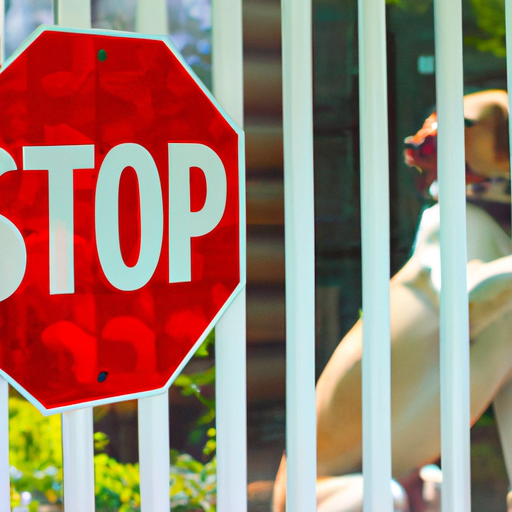As a caregiver, you might have observed peculiar behavior in your dog. Sometimes, it might growl, bark, or show its teeth when behind a window, door, or fence. This behavior is termed as barrier aggression.
- Table of Contents
- Understanding Barrier Aggression
- Causes of Barrier Aggression
- Signs of Barrier Aggression
- How to Manage Barrier Aggression
- Preventing Barrier Aggression
-
Frequently Asked Questions
-
Key Takeaways
- Barrier aggression is a common behavioral issue in dogs.
- It is often caused by fear, frustration, or territorial behavior.
- Signs include barking, growling, and lunging.
- Training and behavior modification techniques can manage and prevent barrier aggression.
Understanding Barrier Aggression
Barrier aggression is a type of reactive behavior in dogs that typically occurs when a physical barrier separates them from something or someone they want to interact with. This can be a window, door, fence, or even a leash.
This behavior is not necessarily an indicator of a dog’s overall temperament. It’s more often a situational response, triggered by specific conditions. Consequently, a dog displaying barrier aggression might otherwise be quite friendly under different circumstances [^1^].
Causes of Barrier Aggression
There are several potential causes of barrier aggression:
- Fear: Dogs may react aggressively when they feel threatened or scared, and a barrier can intensify these feelings.
- Frustration: If a dog wants to interact with something on the other side of a barrier but can’t, it may react with frustration.
- Territorial Behavior: Dogs are often protective of their space. A perceived intrusion can trigger aggressive behavior.
Understanding the root cause of your dog’s barrier aggression is the first step in addressing it.
Signs of Barrier Aggression
Recognizing the signs of barrier aggression is crucial. They include:
- Barking: Loud, continuous barking at people or other animals behind a barrier.
- Growling: A low, threatening sound, particularly when someone approaches the barrier.
- Lunging: Physical attempts to attack through the barrier.
- Baring Teeth: An aggressive display intended to intimidate.
If you notice these signs, it might be a good idea to consult a professional dog behaviorist or trainer. A good resource to start with can be found here.
How to Manage Barrier Aggression
Managing barrier aggression involves a combination of training, behavior modification, and sometimes, medical intervention.
-
Training: Basic obedience training can be a highly effective tool. Commands like “sit”, “stay”, and “quiet” can help manage your dog’s behavior.
-
Behavior Modification: Techniques like desensitization and counter-conditioning can help change your dog’s emotional response to triggers.
-
Environmental Changes: Adjusting your dog’s environment, for example, blocking its view from windows or securing your yard with a solid fence, can help.
-
Medical Intervention: In some cases, medication might be necessary. Always consult a veterinarian for such steps.
Read more about dog behavior and training tips on this page.
Preventing Barrier Aggression
Preventing barrier aggression involves early socialization, regular training, and monitoring your dog’s behavior. Providing your dog with plenty of exercise and mental stimulation can also help reduce frustration and anxiety.
For more tips on preventing dog behavior problems, refer to this article.
Frequently Asked Questions
-
What is barrier aggression in dogs?
Barrier aggression is a reactive behavior in dogs that occurs when a physical barrier separates them from something or someone they want to interact with. -
What causes barrier aggression?
Barrier aggression can be caused by fear, frustration, or territorial behavior. -
How can I manage my dog’s barrier aggression?
Managing barrier aggression involves a combination of training, behavior modification, environmental changes, and sometimes, medical intervention. -
Can barrier aggression be prevented?
Yes. Preventing barrier aggression involves early socialization, regular training, monitoring your dog’s behavior, and providing plenty of exercise and mental stimulation.
Remember, understanding and managing barrier aggression in dogs is a gradual process. Patience, persistence, and professional guidance can lead to significant improvements in your dog’s behavior.
[^1^]: Understanding Dog Aggression



